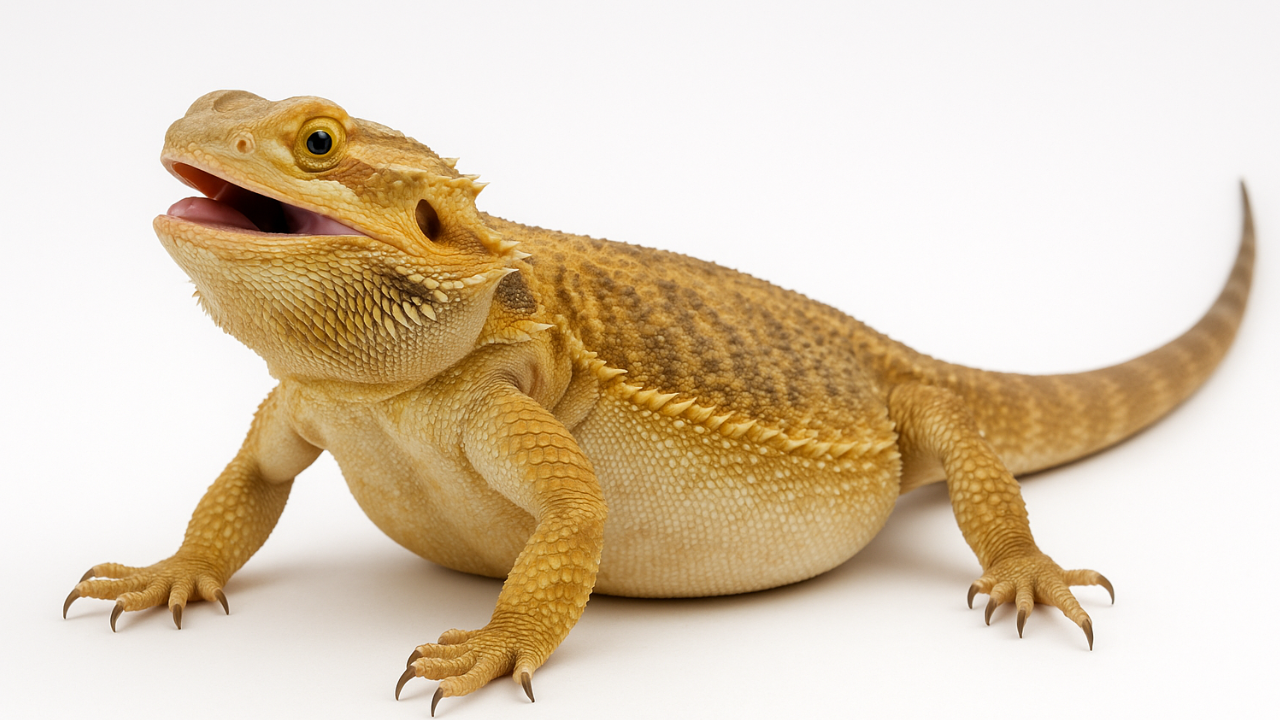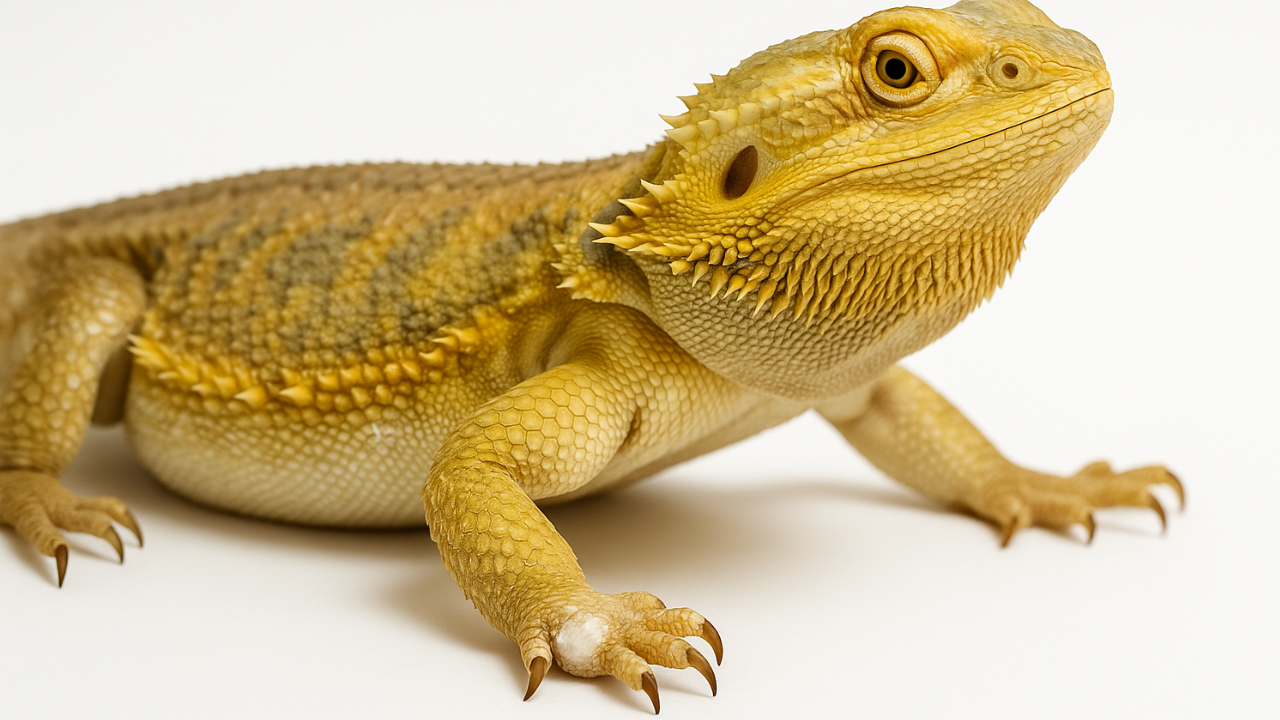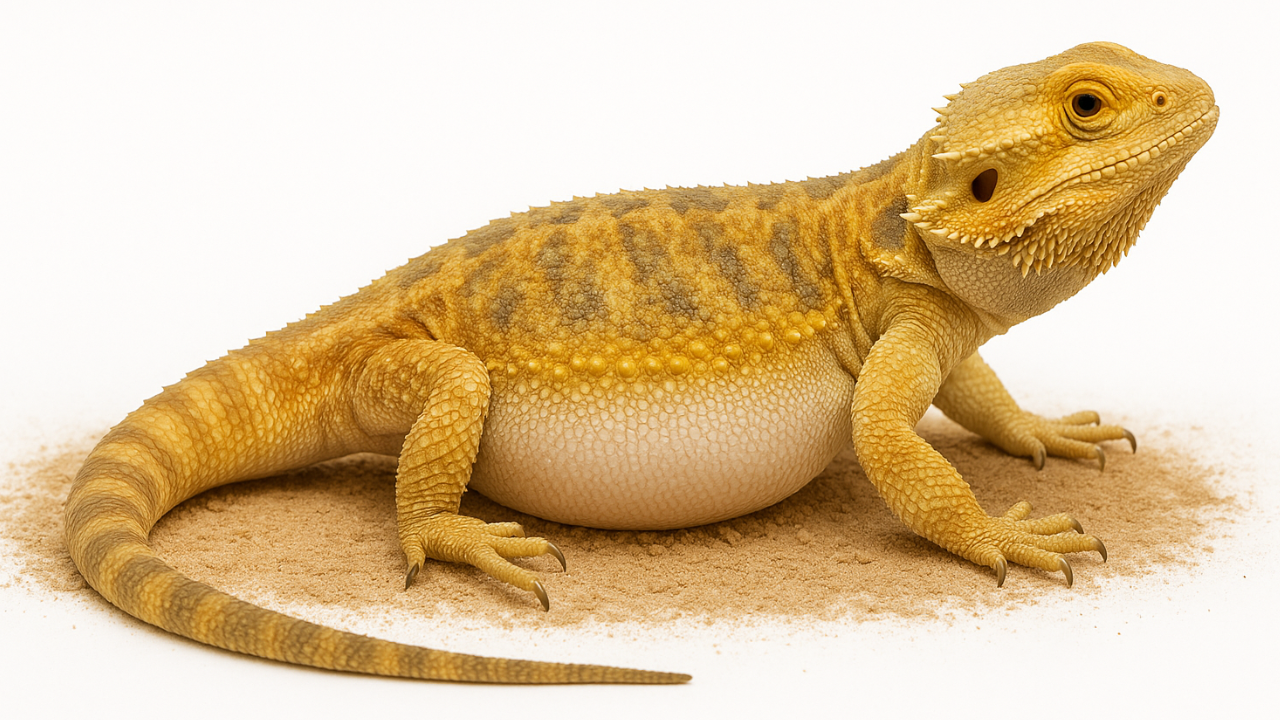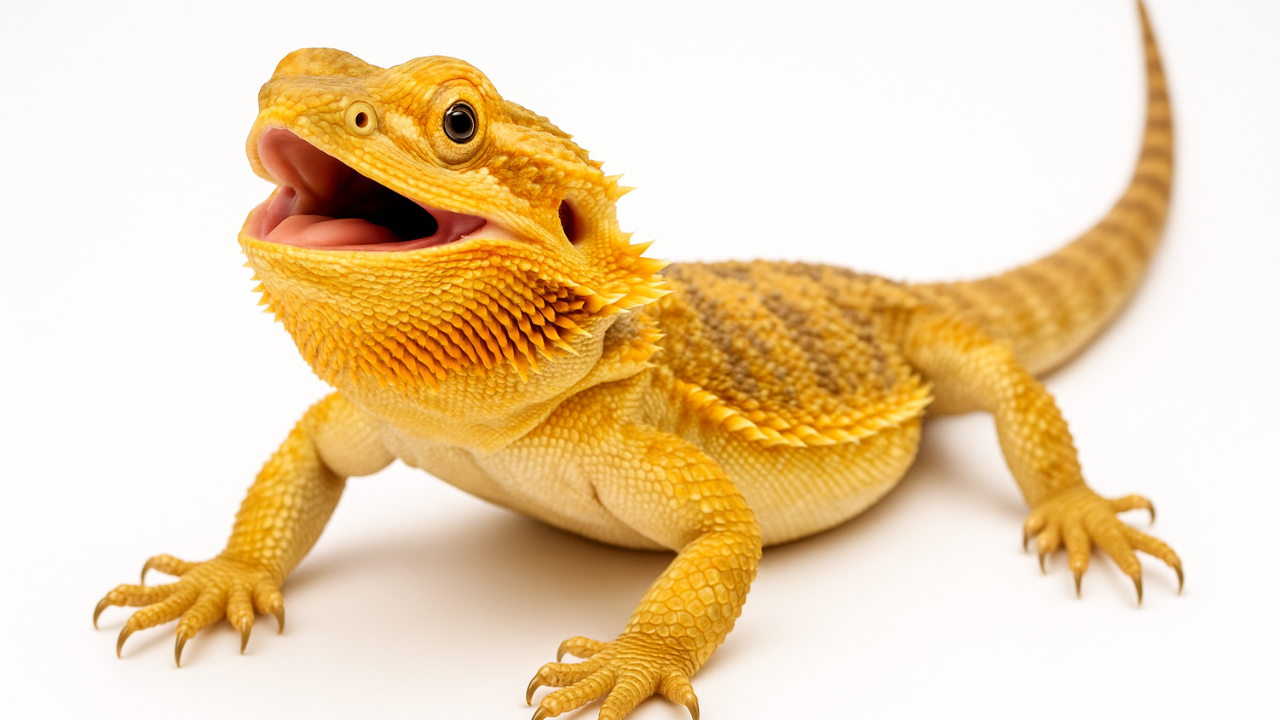Bearded Dragon Health: Common Problems and Treatment Solutions
Posted by TopFlight Dubia on Jun 19th 2025
|
Summary: Bearded dragons face common health issues like internal parasites, impaction, metabolic bone disease, and respiratory infections. Regular vet visits, proper diet (Dubia roaches, leafy greens), UVB lighting, and correct temperature are essential for prevention and treatment. Timely veterinary care is crucial for signs like lethargy, weight loss, or abnormal behavior to ensure your pet's health and well-being. |
Bearded dragons are popular pets due to their docile nature and ease of care. However, many pet owners often overlook common health issues that these reptiles face. This tends to happen because:
- If the pet seems active and is eating, owners may believe their pet is healthy, overlooking the subtle signs of illness.
- Bearded dragons, like many reptiles, have the ability to hide symptoms of illness.
- Many pet owners are unaware of the common health problems that bearded dragons encounter.
In fact, a study was conducted across three exotic animal clinics in Central Europe that examined the health of 529 captive bearded dragons and found a significant prevalence of diseases.
So, let's dive into the common health problems bearded dragons face, based on the findings from the study.
1. Internal Parasites

Cause
Internal parasites from contaminated food or substrate.
Symptoms
- Weight loss
- Diarrhea
- Lethargy
- Smelly poo
Treatment
The only way to confirm a parasite infestation in bearded dragons is through fecal testing. A vet will request a fecal sample to test for parasites. If parasites are present, the vet will prescribe dewormer to treat the infestation.
|
NOTE: Low levels of parasites in the digestive tract are normal and harmless. Avoid using dewormers on low levels of parasites. |
Study Relevance
The study found endoparasitism as one of the prevalent issues in bearded dragons, with pinworms (48.7%), coccidians (25.39%), and flagellates (16.06%) being the most common. This highlights the importance of regular fecal exams.
2. Impaction

Cause
- Consumption of substrates like sand, gravel, or small pebbles.
- Feeding food items that are too large or difficult to digest.
- Inadequate basking temperatures
- Dehydration
- Insufficient UVB
- Overfeeding and a lack of exercise can lead to obesity.
Symptoms
- Loss of appetite
- No bowel movements
- Reduced activity levels and increased resting
- Swelling or distension in the belly area
- Difficulty in moving
Treatment
- Soak your bearded dragon in lukewarm water for 20-30 minutes to help soften the blockage and stimulate bowel movements.
- Gently massaging the abdomen in a downward motion can help in moving the impaction through the digestive tract.
- Ensure your pet is hydrated.
- Offer high-fiber foods like leafy greens (Bell Peppers, Collard Greens) and avoid hard-to-digest foods.
Study Relevance
The study's gastrointestinal diseases category noted sand ingestion as a common cause of impaction.
3. Metabolic Bone Disease (MBD)

Cause
MBD in bearded dragons results from a calcium deficiency, often due to inadequate UVB lighting or improper diet.
Symptoms
- Lethargy
- Tremors
- Swollen limbs or jaw
- Deformities in bones
Treatment
- Calcium supplements
- Adequate basking temperatures
- UVB lighting adjustments
- Dietary changes
Study Relevance
The study found that metabolic bone disease is common in bearded dragons, with many cases showing imbalances in calcium and phosphorus levels. Over 57% of blood tests showed abnormal calcium ratios.
4. Atadenovirus (ADV)

Cause
Atadenovirus is a highly contagious viral infection in bearded dragons. It spreads through direct or indirect contact with infected dragons.
Symptoms
- Gastrointestinal issues: Loss of appetite, weight loss, diarrhea
- Neurological signs: Lethargy, head tilting, arching the head upward, and seizures.
- General health decline: Weak immune system.
Treatment
Supportive care is the primary approach, as there is no cure for ADV. Treatment focuses on managing symptoms and ensuring comfort, which may include:
- Take your bearded dragon to the veterinarian frequently
- Deworming ( It is the process of eliminating internal parasites, such as worms or other intestinal parasites, that may affect their health)
- Daily soaking
- Assist feeding
Prevention
- House and bathe bearded dragons separately.
- Wash your hands thoroughly between handling.
- Avoid reusing uneaten food and sharing supplies.
Study Relevance
Viral infections like adenovirus can compromise the immune system, which may contribute to other health issues in bearded dragons, including internal parasites.
5. CANV (Yellow Fungus Disease)

Cause
Fungal infections are often found in immunocompromised dragons.
Symptoms
- Yellow lesions on the skin
- Swelling
- Loss of appetite
Treatment
- Antifungal medications
- Supportive care
Study Relevance
While the study did not cover yellow fungus specifically, skin tumors (such as sarcomans and melanomas) were common, which may be related to fungal infections that cause lesions.
6. Respiratory Infections

Cause
Bacterial infections are often due to low temperatures or high humidity
Symptoms
- Nasal discharge
- Lethargy
- Loss of appetite
- Difficulty in breathing
Treatment
- Maintain proper bearded dragon tank temperature (110°F at the warmer end and 75°F at the cooler end). Ensure 30-40% humidity during the day.
- Make an appointment with your veterinarian regularly.
Study Relevance
Respiratory infections fall under the broader category of infectious diseases, which are caused by environmental factors.
7. Mouth Rot (Infectious Stomatitis)

Cause
Mouth rot typically arises due to:
- Inadequate temperature, humidity, or UVB lighting.
- Feeding soft, sugary foods that don’t aid in dental health.
- Environmental or handling stress compromises the immune system.
Symptoms
- Swollen, red, or bleeding gums
- Excessive salivation or mucus
- White or yellowish plaque in the mouth
- Difficulty closing the mouth
- Loss of appetite or refusal to eat
- Lethargy or reduced activity
Treatment
- Consult a reptilian vet for diagnosis and treatment.
- Provide a warm, stress-free environment and ensure proper hydration.
Study Relevance
Environmental stress, often noted in the study of gastrointestinal diseases and skin tumors, can contribute to immune system weakness and lead to infections like mouth rot.
8. Tail Rot

Cause
- Tail injury
- Incomplete shedding that cuts off circulation to the tail
Symptoms
- Discoloration of the tail tip
- The tail does not shed
- Foul odor
Treatment
- Take your pet to the vet immediately if you believe your bearded dragon has a tail rot.
Study Relevance
Musculoskeletal disorders such as fractures and necrosis were prevalent in the study, particularly in the tail and limbs.
9. Gout

Cause
Excessive uric acid in the blood, often due to:
- High protein diets
- Kidney dysfunction
- Dehydration
- Obesity
- Genetic disorder
Symptoms
- Swollen, painful joints
- Limping or reluctance to move
- Visible uric acid crystals in the mouth
- Lethargy
Treatment
- Immediate vet visit for diagnosis (x-rays, blood test, joint fluid biopsy)
- Lifelong medication
- Dietary adjustments (low protein, high vegetable diet)
- You can gutload Dubia roaches
- Avoid fruits and fruit juices (high sugar worsens gout)
- Surgical removal of crystals in severe cases
Study Relevance
Gout is related to renal diseases( kidney dysfunction) noted in 9.47% of the study's cases, and calcium-phosphorus imbalances are seen in blood tests.
10. Avascular Necrosis

Cause
Reduced blood flow leading to tissue death, often due to:
- Injury
- Infection
- Improper shedding
- Hypothermia
Symptoms
- Discolored or blackened tail or digits
- Swelling
- Lethargy
- Loss of appetite
Treatment
- Surgical removal of necrotic tissue
- Supportive care (hydration, warmth)
Study Relevance
The musculoskeletal disorders category in the study includes necrosis in the limbs and tail, aligning with the causes and symptoms of avascular necrosis.
11. Dystocia

Cause
Difficulty in laying eggs, often due to:
- Calcium deficiency
- Obesity
- Inadequate nesting sites
- Low environmental temperatures
Symptoms
- Lethargy
- Loss of appetite
- Straining without egg production
- Distended abdomen
Treatment
- Female bearded dragons lay clutches of infertile eggs even without a male.
- Provide a lay box with dampened play sand to help with egg laying.
- If she seems unsettled, let her run freely to find a spot, then place her in the lay box.
- Prepare the lay box by wetting the sand and ensuring it clumps for digging.
- Provide warmth with a heat lamp or ceramic heat emitter.
- Females can take tile to dig and lay eggs; don’t interrupt until she’s done.
- After she lays eggs, give her a warm bath. Feed her calcium-dusted bugs such as Dubia roaches, and let her bask.
Post-Laying Recovery
- Monitor her for several days and continue to feed her calcium-rich foods.
- If she shows lethargy or lack of appetite without laying, she may be egg-bound and should be taken to the vet.
Study Relevance
Urogenital diseases such as dystocia were found in 9.47% of the study's cases. It highlights the importance of providing proper care.
Conclusion

The study identified gastrointestinal diseases, skin conditions, metabolic bone diseases, and musculoskeletal disorders as the most prevalent issues in captive bearded dragons.
This highlights the importance of providing better care to bearded dragons, including regular veterinary care, parasitological fecal exams, and optimizing feeding and housing conditions. To Prevent these conditions, it is important to provide a proper foods such as protein-rich insects (Dubia roaches), leafy greens (Collard greens) and many more.
Regular checkups and proper environmental setups can prevent many of these common diseases to ensure your pet stays healthy, happy, and thriving.

